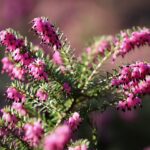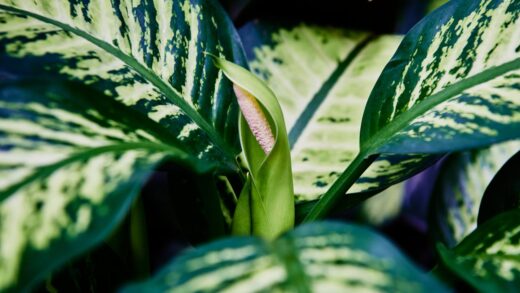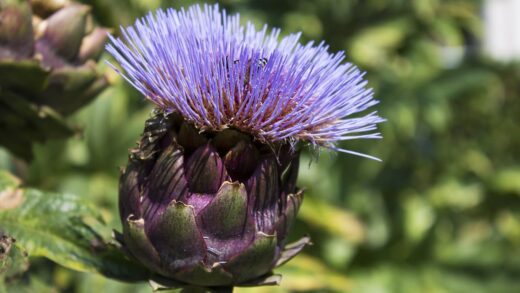The process of overwintering Erica carnea is, for the most part, a matter of appreciating its inherent toughness rather than providing extensive protection. This plant is a true alpine native, and its entire life cycle is adapted to surviving, and indeed thriving, in cold winter conditions. It is exceptionally hardy, typically rated for USDA zones 4 or 5, meaning it can withstand significant freezing temperatures without any special cover. In fact, winter is its season of glory, when it puts on a spectacular floral display in defiance of the cold. The primary challenges it faces during winter are not the cold itself, but rather issues like winter desiccation from dry winds and the unique vulnerabilities of plants grown in containers. Understanding these specific challenges allows the gardener to take simple, targeted steps to ensure the plant comes through the winter not just alive, but in peak condition to perform.
The natural hardiness of alpine heath is its greatest asset for winter survival. Its small, needle-like leaves are covered in a waxy cuticle that helps to reduce water loss, a crucial adaptation for surviving when the ground is frozen and water is unavailable to the roots. The plant also produces natural compounds that act like an antifreeze within its cells, preventing them from rupturing during freezes. This is why it can continue to look vibrant and even flower profusely when temperatures are well below freezing. For gardeners in most temperate climates, plants established in the ground will require no winter protection whatsoever.
Despite its impressive cold tolerance, there are certain winter conditions that can pose a threat. One of the most significant is winter desiccation, also known as winter burn. This occurs when the evergreen foliage loses moisture to cold, dry winds on a sunny day, while the roots are in frozen ground and cannot absorb any water to replace it. This can result in the browning and dieback of foliage, particularly on the side of the plant exposed to the prevailing winter winds. Providing adequate moisture in the autumn before the ground freezes is the best defense against this problem.
The other major consideration for overwintering is the method of cultivation. An alpine heath planted in the garden benefits from the vast thermal mass of the earth, which insulates its roots from the most extreme temperature fluctuations. A plant grown in a container, however, does not have this protection. The roots in a pot are exposed to the cold from all sides, and the entire root ball can freeze solid much more quickly and for longer periods than the ground soil. This makes container-grown plants significantly more vulnerable to winter damage, and they often require specific protective measures in colder climates.
The natural hardiness of alpine heath
The remarkable winter hardiness of Erica carnea is a direct result of its evolutionary history in the mountainous regions of central and southern Europe. It is adapted to survive under a thick blanket of snow for long periods, which actually insulates the plant from the harshest temperature extremes and drying winds. This adaptation means that in the garden, it is far more resilient to cold than many other common perennials and shrubs. It can comfortably tolerate temperatures dropping to -20°C (-4°F) or even lower, especially when established in a well-drained location.
This inherent toughness means that for the vast majority of gardeners, the concept of “overwintering” alpine heath is simply about letting it be. There is no need for winter mulching, wrapping in burlap, or applying anti-desiccant sprays, practices which are often necessary for more tender evergreens. In fact, piling a heavy, wet mulch like compost or manure around the base of the plant for winter can be detrimental. It can trap too much moisture against the stem and crown, promoting rot and creating the very conditions the plant is naturally adapted to avoid. A light mulch of pine needles or bark is acceptable, but is done more for soil health than for winter protection.
The flowering cycle of alpine heath is also intrinsically linked to the cold. The flower buds are formed in the late summer and autumn and require a period of cold weather, known as vernalization, to mature properly before they can open. This is why the plant blooms so readily in the cold of late winter and early spring. The flowers themselves are also surprisingly frost-tolerant, often shrugging off light freezes and continuing their display. A heavy snowfall can temporarily bury the plant, but it will typically emerge unscathed once the snow melts.
The main takeaway for gardeners is to trust in the plant’s natural resilience. Provided it is planted in a suitable location with excellent drainage, an established Erica carnea is more than capable of handling winter on its own. The gardener’s role is not to coddle it, but to ensure the foundational conditions for its health are met throughout the year, which in turn allows its impressive natural hardiness to shine through during the winter months.
Preparing plants for the winter season
While established alpine heath requires minimal winter preparation, a few simple steps taken in the autumn can help ensure it weathers the season in the best possible condition. The most important of these is to ensure the plant goes into the winter well-hydrated. If your region has experienced a dry autumn, provide the plant with a deep and thorough watering a few weeks before the first hard freeze is expected. This allows the plant to fully charge its tissues with water, which is the best defense against winter desiccation caused by frozen ground and drying winds.
Tidying up the area around the plants is another beneficial autumn task. Remove any fallen leaves from other trees that may have accumulated on top of or around the heath. A thick, dense mat of wet leaves can smother the plant, block light, and trap moisture, creating an ideal environment for fungal diseases to develop over the winter. Gently raking or hand-picking this debris away ensures that the plant has good air circulation and access to whatever sunlight is available during the shorter winter days.
It is also important to cease all pruning and fertilizing well before winter arrives. Any new growth stimulated late in the season will be tender and highly susceptible to frost damage. All pruning should be completed in the spring after flowering, and fertilization should be limited to the spring as well. The plant needs to be in a state of semi-dormancy to face the winter, and encouraging new growth late in the year works against this natural cycle. Let the plant harden off naturally as the temperatures drop.
For newly planted alpine heath that has not yet been through its first winter, you might consider a very light mulch after the ground has frozen. A loose covering of pine boughs or straw can help to moderate soil temperature fluctuations and reduce moisture loss from the soil. This is generally not necessary for established plants but can provide a bit of extra insurance for young, less-developed root systems during their first cold season. This mulch should be removed promptly in the spring as the weather warms.
Protecting container-grown heaths
Plants grown in containers are the exception to the rule of minimal winter care for alpine heath. The roots in a pot are far more exposed to cold than those in the ground, and can be damaged or killed when the soil in the pot freezes solid. While the foliage of Erica carnea is very hardy, the roots are less so. Therefore, in regions where temperatures regularly drop well below freezing for extended periods, some form of protection for container-grown plants is essential.
One of the simplest methods of protection is to move the container to a more sheltered location. Placing the pot against a north or east-facing wall of the house can shield it from the harshest winter winds and the strong winter sun, which can cause damaging freeze-thaw cycles. An unheated garage, shed, or a cold frame are also excellent places to overwinter potted heaths. The goal is to keep the roots cold and dormant, but to prevent them from being subjected to the most extreme temperature lows.
If moving the pot is not practical, you can insulate it in place. Wrap the outside of the container with several layers of burlap, bubble wrap, or old blankets to provide an insulating barrier. Another effective technique is the “pot-in-pot” method. You can sink the existing pot into a larger container and fill the gap between the two with insulating material like straw, leaves, or wood chips. Alternatively, if you have a vegetable garden, you can simply dig a hole and sink the entire pot into the ground up to its rim for the winter, providing the excellent insulation of the surrounding earth.
Watering for container plants in winter requires careful management. They will still lose some moisture, especially during windy or sunny spells, and should not be allowed to dry out completely. However, overwatering is also a risk. Check the pot every few weeks and water only when the top few inches of the growing medium are dry. Water sparingly, providing just enough to moisten the root ball. Ensure the pot has excellent drainage so that it never becomes waterlogged, which would be fatal if it then freezes solid.
Winter damage and spring recovery
Despite its hardiness, alpine heath can occasionally suffer some minor damage over a particularly harsh winter. The most common issue is tip burn or browning of the foliage, which is usually a result of winter desiccation from cold, drying winds. While it may look unsightly, this damage is often superficial. In most cases, the underlying stems and buds are still alive and will produce new growth as the weather warms up in the spring.
It is important to be patient in the spring and not be too quick to prune what you think might be dead branches. Wait until new growth begins to emerge, which will clearly show you which parts of the plant are viable and which are truly dead. Once you can see the new shoots appearing, any brown, brittle stems that show no signs of life can be safely pruned out. This post-winter tidying up is often all that is needed to restore the plant’s appearance.
In rare cases, a plant may be damaged by the weight of heavy, wet snow or ice, which can splay the branches and open up the center of the plant. If this happens, you can gently try to push the branches back into place. Some may recover their position, while others might need to be pruned back after flowering to encourage new, more upright growth to fill in the gap. This is another reason why annual spring pruning is so beneficial, as it helps to maintain a strong, dense structure that is more resistant to this type of damage.
If a plant in the ground has died completely over the winter, the cause is almost certainly related to drainage rather than cold. If you find a dead plant in the spring, excavate the area and assess the soil conditions. It is highly likely you will find that the soil is compacted and holds too much water. Before replanting in that spot, you must address the underlying drainage issue by incorporating significant amounts of grit and organic matter, or by choosing a different, better-drained location for your new alpine heath.


















